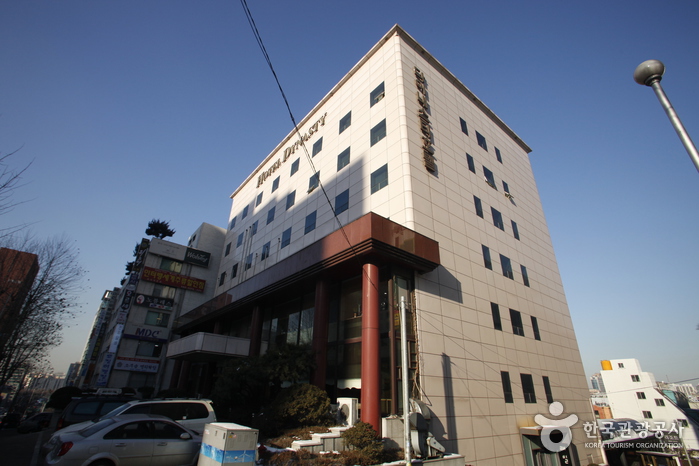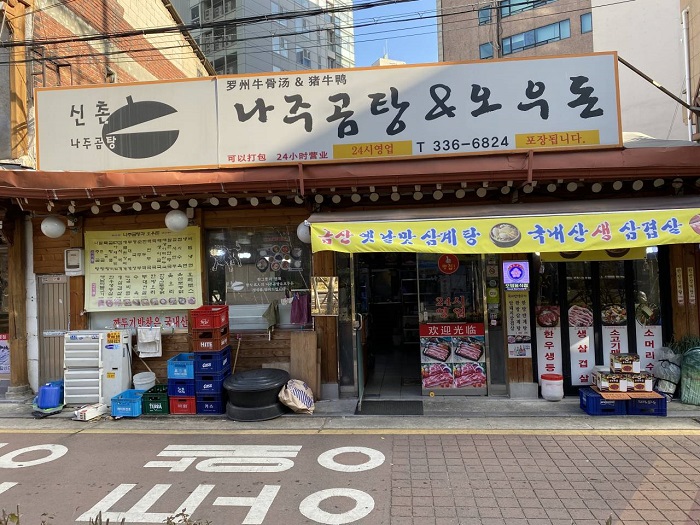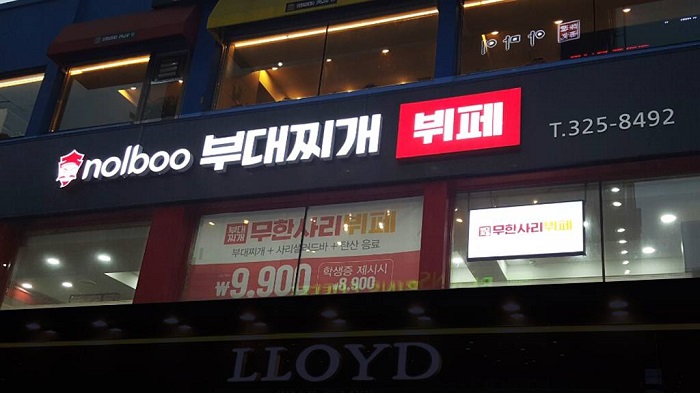Museo Folclórico Nacional y Museo Infantil del Museo Folclórico Nacional (국립민속박물관&국립민속박물관 어린이박물관)
5.0Km 2024-04-18
Samcheong-ro 37, Jongno-gu, Seúl
Sala de Historia de la Prisión Seodaemun (서대문형무소역사관)
5.0Km 2022-12-15
Tongil-ro 251, Seodaemun-gu, Seúl
+82-2-360-8590
La Sala de Historia de la Prisión Seodaemun es un museo especial, situado en el Parque de la Independencia de Seodaemun. La prisión fue construida cerca de finales de la dinastía Joseon (1392-1910), y era el lugar en el que los soldados japoneses torturaban y luego ejecutaban a los seguidores coreanos del Movimiento por la Independencia. La Sala de la Historia de la Prisión Seodaemun fue establecida en recuerdo de la Prisión Seodaemun y para homenajear a los patriotas coreanos. Allí se encuentran siete celdas de prisión, una sala de exhibición histórica, una sala de ejecuciones, torres de vigilancia y una celda en el sótano en donde falleció Yu Gwan-sun, una figura histórica del movimiento independentista.
El 1er. piso es “Un Lugar de Reverencia”, en donde se informa sobre la Prisión Seodaemun a través de sistemas gráficos. Una gran pantalla muestra los orígenes de su fundación y los períodos de transición en su historia. La Sala de Material tiene exposiciones e información sobre la historia de Corea. El museo también alberga exhibiciones especiales. El 2º piso es “Un Lugar de Historia”, en donde se puede ver la “Sala de la Resistencia Nacional”, la “Sala de la Historia de la Prisión” y la “Sala de la Vida en la Prisión”. Este piso muestra ejemplos de cómo la gente luchó de forma continua, durante este oscuro capítulo de la historia coreana, para aferrarse a su esperanza y determinación de obtener la libertad. “Un Lugar de Experiencia” es el lugar más horrendo y espantoso de la prisión. En la “Sala de Detención Temporal” y en la “Sala de Tortura” verá recreadas escenas de torturas, que son terriblemente realistas.
En el Parque de la Independencia de Seodaemun cercano puede visitar la Sala de la Independencia, el Monumento Patriótico a los Mártires, el Monumento a la Declaración de Independencia del 1° de Marzo, y las reliquias N° 32 y 33.
Hotel Dynasty (호텔 다이내스티)
5.0Km 2020-03-27
125, Bongeunsa-ro, Gangnam-gu, Seoul
+82-2-540-3041
Hotel Dynasty in southern Seoul has 58 Western-style and 6 Korean-style guestrooms. The hotel’s location in Nonhyeon-dong offers easy access to the city’s trendy spots such as Gangnam and Apgujeong.
Hanok Guesthouse Dongchonchae [Korea Quality] / 한옥 게스트하우스 동촌재 [한국관광 품질인증/Korea Quality]
5.0Km 2021-03-26
21-10, Jahamun-ro 11-gil, Jongno-gu, Seoul
Built in 1939, Dongchonchae was designated as Seoul Well Hanok by the Seoul Metropolitan City in 2016. In 2020, this hanok (traditional Korean house) received the Certificate of KOREA QUALITY from the Korea Tourism Organization in the Heritage Hanok field in recognition of its historicity and quality of services. Dongchonjae is located in the western side of Gyeongbokgung Palace, at Seochon. When one passes through its main gate, one sees the yard, with anchae (women's quarters), sarangchae (men's quarters), and byeolchae (detached quarters) surrounding the plot. Anchae has four rooms, daecheong (wood-floored main hall), a kitchen, and a restroom. One of the rooms is used for tea ceremonies as well. Outside of the sarangchae and byeolchae, which are the living spaces for the owners, visitors have free access to the numaru (raised open floor) and the yard. The anchae’s rooms “Bom” and “Yeoreum” can accommodate 2 to 3 adults each, while the rooms “Gaeul” (Tea Room) and “Gyeoul” are optimal for two. The building is rented out as a whole, so no more than one group may stay in the building at any given time. Standard occupancy is four persons, and eight is the maximum number. There are two restrooms, one within the anchae building, one out in the backyard.
Cooking is not allowed in the kitchen, but guests are free to bring in outside food. Experience programs on offer include nighttime exploration of Seoul City Wall, tea ceremony, folk songs, and rice cake making. Additional payment is only required for rice cake making. Guests may choose between two types of complimentary breakfast: Korean, which comes with rice, soup, and three side dishes; and Western, which comes with bread, salad, and coffee. There are a 100-in screen and mini projector for film watching in the yard or daecheong. Towels, toiletries, hair dryer, bottled water, traditional tea, and capsule coffee are included. The kitchen is equipped with kitchen utensils, a microwave, and a coffee pot, enough for instant foods. Guests also have access to refrigerator and washing machine
Puerta de la Independencia (Dongnimmun) (독립문)
5.0Km 2022-12-15
Tongil-ro 251, Seodaemun-gu, Seúl.
Dongnimmun se halla en un lugar conocido originalmente como Yeongeun, en donde otrora se trataba a los enviados oficiales. Cuando un enviado chino hacía una visita, el rey salía a través de esta puerta para recibirle. Fue construida en 1897, para anunciar la independencia de China, quien había influido en Corea durante mucho tiempo, y de Japón y Rusia, quienes acechaban al país.
Las expensas de la construcción fueron recaudadas como contribución por los ciudadanos coreanos. Los vestigios del pasado todavía permanecen en Dongnimmun. Los dos pilares enfrente de Dongnimmun son los restos de Yeongeunmun.
Si comparamos Dongnimmun, puede evocarnos al Arco del Triunfo de Francia, ya que este último se tomó como modelo para su construcción. Dongnimmun fue edificada con un muro de granito, y hay un pasillo con una altura de 14,28 metros. En lo alto está escrito “Dongnimmun” en coreano, con la bandera nacional dibujada a cada lado. En el lado interior izquierdo hay escaleras de piedra que conducen al ático. La flor nacional, mugunghwa, está plantada alrededor de Dongnimmun. Ahora está rodeada por carreteras y es llamativa a la vista cuando se pasa por allí.
Nuwa [Korea Quality] / 누와 [한국관광 품질인증/Korea Quality]
5.0Km 2021-03-29
3-1, Pirundae-ro 5na-gil, Jongno-gu, Seoul
This hanok (traditional Korean house) is located deep in the Seochon Village, west of Seoul’s Gyeongbokgung Palace. Its tasteful renovation of a small 33 m2 hanok made it highly popular among the younger guests. The courtyard has a low maple tree and tastefully arranged stones, while the hanok is capable of accommodating up to 2 persons.
This L-shaped hanok has a full window wall facing the living room, which is furnished with a low walnut table and a bathtub. Visitors can enjoy premium tea at the table. The bathtub, which is connected to the table at one end, can be used mainly for a foot bath with bath salts that assist circulation. There is also a restroom in the building.
Nuwa’s bedroom has a circular window, much like the full moon, with a view of the garden and the fringes of the Inwangsan Mountain.
Yeonwoohouse [Korea Quality] / 연우하우스 [한국관광 품질인증]
5.0Km 2023-04-13
5-13, Bukchon-ro 12-gil, Jongno-gu, Seoul
Yeonwoo Guesthouse is a quiet and cozy traditional Korean guest house (hanok) located in Gahoe-dong, Jongnogu in Bukchon Hanok Village, a charming area crisscrossed with a labyrinth of old alleyways. As it is close to some of Seoul’s most famous tourist attractions, including Changgyeonggung Palace, Changdeokgung Palace and Gyeongbokgung Palace, many tourists from Southeast Asia and Europe book a stay here.
It consists of two cozy guestrooms, each equipped with a bathroom. Among the guest house’s many charms is the panoramic view of Bukchon Hanok Village from its rooftop, which can be reached by a ladder. It also boasts the beauty of a traditional Korean house during the daytime and a spectacular view at nighttime.
As it is an old hanok, the owner pays close attention to hygiene, and has the entire building regularly sterilized by a sanitary control company.
Najugomtang&Oudon (나주곰탕&오우돈)
5.0Km 2021-03-30
19, Sinchon-ro 18-gil, Mapo-gu, Seoul
+82-2-336-6824
It is a place where you can eat a variety of Korean dishes. The best menu at this restaurant is Naju beef bone soup. This Korean dishes restaurant is located in Mapo-gu, Seoul.
Nolbu Budaejjigae Bwipye Sinchon(놀부부대찌개뷔폐 신촌)
5.0Km 2020-11-26
23 Yonsei-ro Seodaemun-gu Seoul
+82-2-325-8492
This is a house where you can have all the Budaejjigae (spicy sausage stew) you can eat. This Korean dishes restaurant is located in Seodaemun-gu, Seoul. The representative menu is sausage stew.
Bubu Sikdang (부부식당)
5.0Km 2021-03-26
43, Dongsung-gil, Jongno-gu, Seoul
+82-2-765-6056
You can enjoy fusion dishes in a cozy atmosphere. This Korean dishes restaurant is located in Jongno-gu, Seoul. The representative menu is royal stir-fried rice cake.


![Hanok Guesthouse Dongchonchae [Korea Quality] / 한옥 게스트하우스 동촌재 [한국관광 품질인증/Korea Quality]](http://tong.visitkorea.or.kr/cms/resource/96/2705896_image2_1.jpg)
![Nuwa [Korea Quality] / 누와 [한국관광 품질인증/Korea Quality]](http://tong.visitkorea.or.kr/cms/resource/07/2707607_image2_1.jpg)
![Yeonwoohouse [Korea Quality] / 연우하우스 [한국관광 품질인증]](http://tong.visitkorea.or.kr/cms/resource/83/2557483_image2_1.jpg)


 Español
Español
 한국어
한국어 English
English 日本語
日本語 中文(简体)
中文(简体) Deutsch
Deutsch Français
Français Русский
Русский